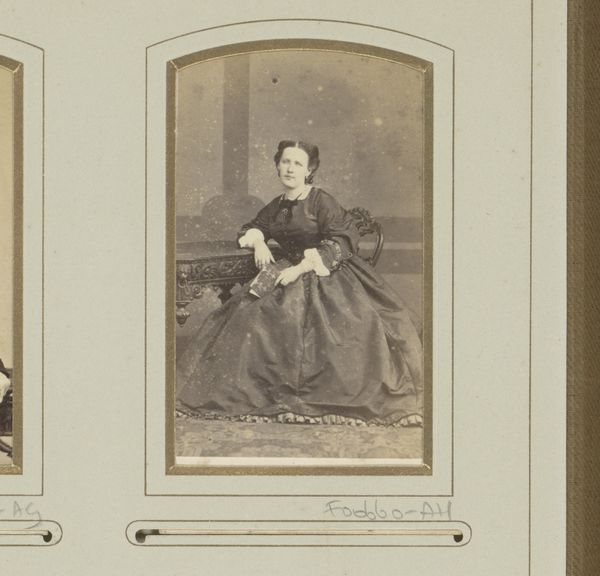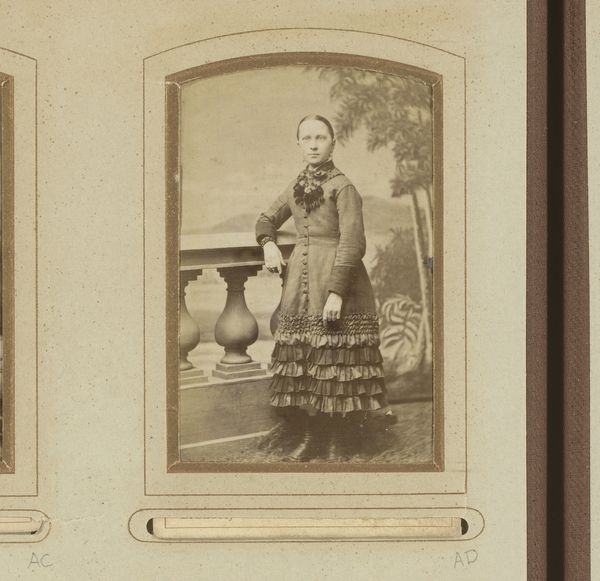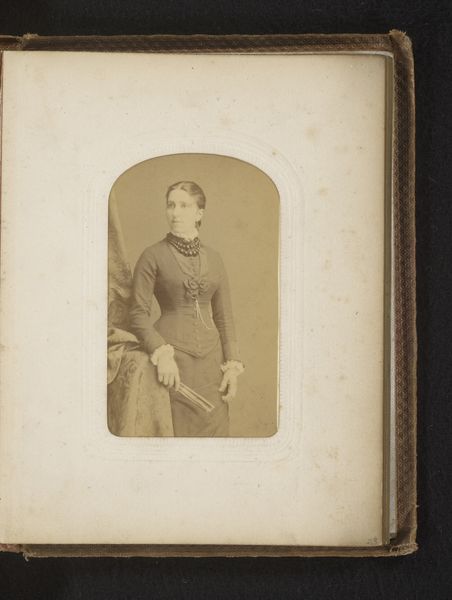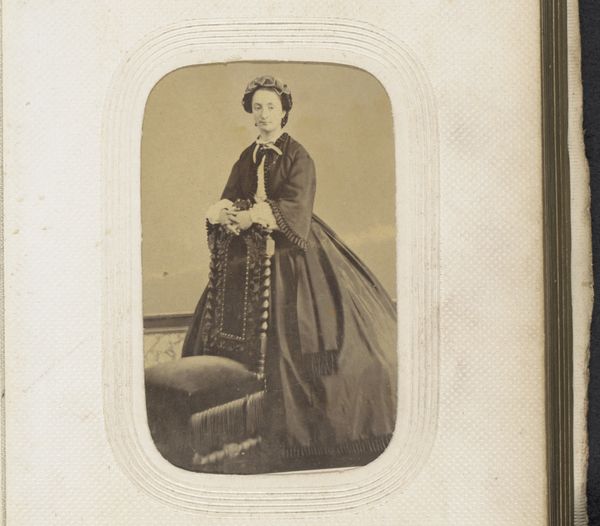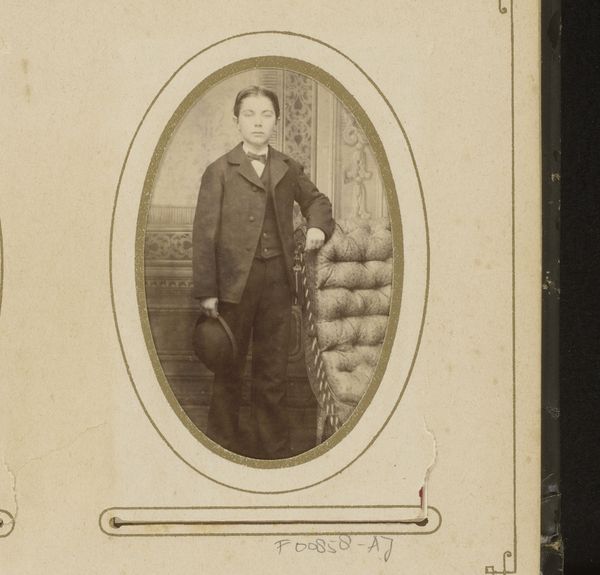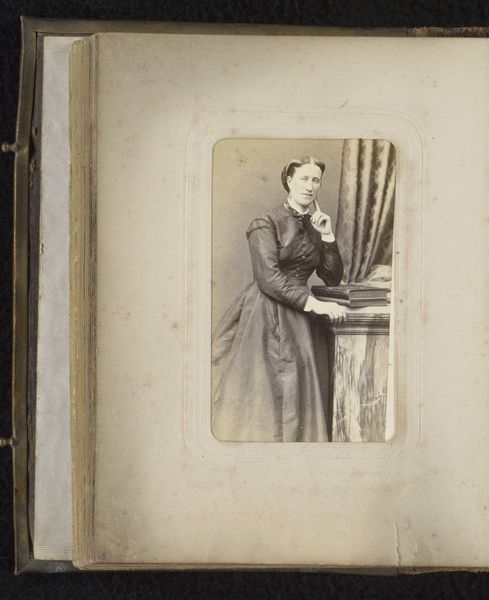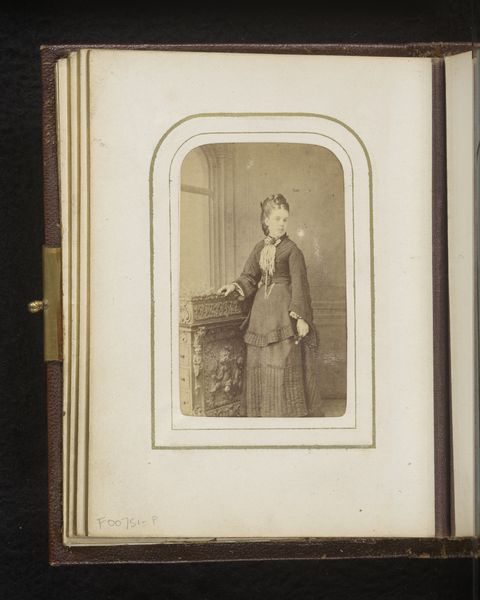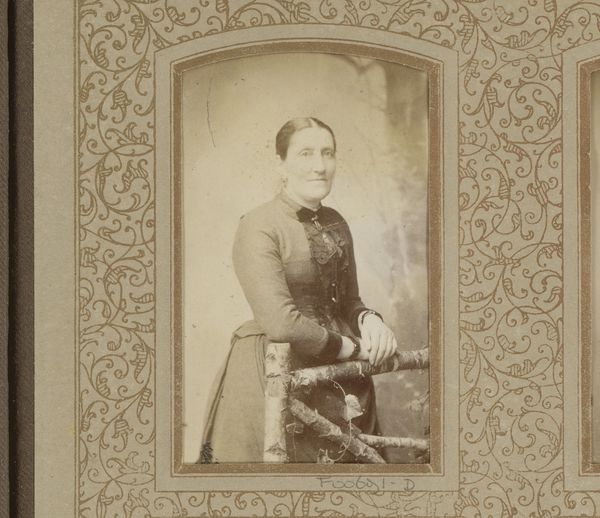
photography
#
portrait
#
16_19th-century
#
photography
#
19th century
#
charcoal
#
realism
Dimensions: height 81 mm, width 52 mm
Copyright: Rijks Museum: Open Domain
Editor: This is "Portret van een meisje, staand bij een fauteuil," a photograph from between 1878 and 1889. There’s something really haunting about the image’s subdued tones and the girl’s stoic pose. What do you see when you look at this piece? Curator: Formally, the image strikes me with its controlled arrangement of light and shadow. Observe how the artist directs our gaze through strategic tonal contrasts. The dark dress of the subject plays against the diffused, lighter background. Editor: I notice the backdrop. Does its pattern contribute to the overall composition? Curator: Indeed. The backdrop introduces a secondary plane of detail, albeit intentionally blurred. This soft contrast enhances the sharpness of the girl's figure, setting off the geometry of her clothing against the softness of her skin. How does the chair's structure strike you? Editor: It adds another layer of texture. The curves offer a contrast to the straight lines of her attire and posture, but is that enough to resolve the disjunction of forms? I’m still uncertain. Curator: The visual "disjunction", as you call it, creates a dynamic tension, doesn’t it? It underscores the photographic nature of the image itself--the act of freezing an unrepeatable arrangement of forms in space. It emphasizes the artwork's structure, inviting us to reflect on form beyond its immediate representative function. Editor: So, it’s the arrangement of shapes and tones, not just the representation, that gives it power. I’ll definitely be considering that dynamic more carefully from now on. Curator: Precisely. Understanding how an image presents itself structurally offers the means to deeper insights.
Comments
No comments
Be the first to comment and join the conversation on the ultimate creative platform.
